 The disgraced former President of FIFA once said, “When you go into extra time, we’re talking about drama. But when we reach the penalty shootout, it’s a tragedy”. The Brazilian footballer Pelé, meanwhile, wrote in his autobiography that ‘a penalty is a cowardly way to score’. It is an aspect of football that has caused agony and heartbreak countless times over the years, from England consistently getting knocked out of international tournaments through to cup finals being decided by the kick of a ball.
The disgraced former President of FIFA once said, “When you go into extra time, we’re talking about drama. But when we reach the penalty shootout, it’s a tragedy”. The Brazilian footballer Pelé, meanwhile, wrote in his autobiography that ‘a penalty is a cowardly way to score’. It is an aspect of football that has caused agony and heartbreak countless times over the years, from England consistently getting knocked out of international tournaments through to cup finals being decided by the kick of a ball.
Penalties as a whole have been debated and argued over more than almost any other aspect of football, yet we know so little about where the idea for them came from. Why was it decided that a penalty would be a better form of settling a match than anything else, for example?
The extent to which penalties have never been a much-loved way of deciding the result of a football match can be seen in the numerous alternatives that have been invented over the years. There’s been Golden Goals, Silver Goals, NHL-style penalties and much more besides.
Yet still the penalty continues to exist, having gone through very little actual variation since the day it was invented. In this article we’ll have a look at the history of the penalty, exploring why it was needed in the first place and why nobody has been able to come up with a better version of it since. We’ll explore controversial penalty moments, plus have a look at the possible future of the penalty and its long-form relative, the penalty shoot-out. Some people love watching penalties, others absolutely despise them. Perhaps the most pressing question of all comes in the form of wondering why they get given in the first place.
The Origins Of The Penalty in Football
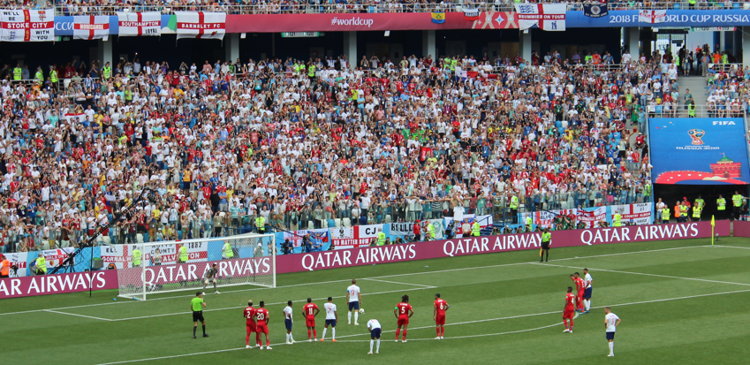
The penalty as a format of punishment for an infringement of the rules of the game was introduced for the first time in 1891. Players other than the goalkeeper that handled the ball within twelve yards of the goal line, or who committed foul play at the same distance, would have a penalty kick given against them. The first time that any sort of rule was introduced for a breaking of the rules of the game came in 1872, when an indirect free-kick could be awarded as a punishment for a handball alone. Two years later the rule was extended to allow an indirect free-kick to be given for any foul play, plus for offside decisions. Interestingly, that is also the first year that match officials began to be used. Prior to that, the captains of each team would be expected to ensure that the rules were obeyed by their players. As the sport began to get more competitive, so too did the need for a stricter punishment grow.
It took until 1903 for the rules around free-kicks to change in order to allow players to score from them directly, provided they had been awarded for handball or foul play. That means that there were twelve years during football’s history when the only time a player could shoot directly at goal after the opposition team had committed and infringement of the rules was when they had been awarded a penalty. That was the same point at which referees were allowed to let the action play on, rather than give a free-kick, if they felt that the attacking team had an advantage. In other words, prior to 1891 and the invention of the penalty, an indirect free-kick would be given. What was it, then, that made the powers that be change the rules around the matter? Intriguingly, the penalty as a form of punishment was actually invented by a goalkeeper, rather than an attacking player as you might presume.
It was a player for Milford Everton FC named William McCrum who came up with the idea, believing that there should be a more severe punishment for a breaking of the rules close to the goal line. He was initially ridiculed for the suggestion, with many believing that the goalkeeper simply wanted more attention to be on him. After all, why on earth would a shot-stopper prefer what was essentially a one-on-one duel between himself and a player over an indirect free-kick that he could place a marshalled defence in front of? It led to quite a heated discussion amongst the members of the International Football Association Board, who were responsible for the introduction and maintenance of the rules of the game, before the penalty was finally introduced as a punishment against players who broke the rules. The vote took place on the second of June 1891 and the way that the game worked changed forever.
What’s fascinating to learn is that there were two major incidents that occurred around the time of the debate that swayed opinion in favour of the introduction of a penalty kick being awarded for foul play. The first came on the 20th December 1890 during a Scottish Cup quarter-final match between East Stirlingshire and Heart of Midlothian. A Midlothian player named Jimmy Adams punched the ball away from the goal from underneath the bar, preventing a goal but facing no real consequence. For the English Football Association something similar happened in an FA Cup quarter-final between Notts County and Stoke City. A County player committed a blatant handball on the goal line on Valentine’s Day in 1891, forcing the chief football authority in England to finally act.
How The Penalty Kick Has Developed
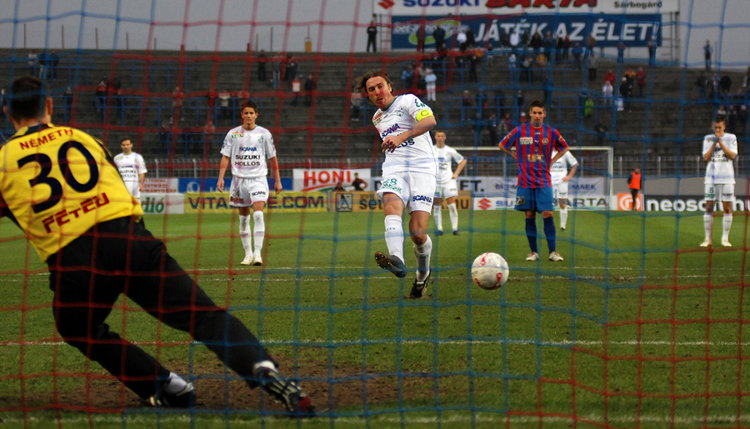
Though William McCrum is widely accepted as being the man that invented the penalty, the actual idea of punishing a team in such a way probably comes from rugby. A suggestion was made to award a penalty kick in football for infringements that occurred within two yards of the goal line during a meeting of the Sheffield Football Association in 1879, but seemingly the idea was rejected. Yet in a report into a rugby match in 1888 there was a line that said, “Dewsbury was awarded a penalty kick in front of the goal”. Perhaps that’s where McCrum got his idea of introducing the same punishment into football, though it was unclear at the start what form that punishment would take. The wording of the law at the time gives us more of an idea on that front. It said:
”If any player shall intentionally trip or hold an opposing player, or deliberately handle the ball within twelve yards from his own goal line, the referee shall, on appeal, award the opposing side a penalty kick, to be taken from any point 12 yards from the goal line, under the following conditions: All players, with the exception of the player taking the penalty kick and the goalkeeper, shall stand behind the ball and at least six yards from it; the ball shall be in play when the kick is taken. A goal may be scored from a penalty kick”.
On reading that it’s interesting to see the line ‘to be taken from any point twelve yards from the goal line’. This can be seen in the change to the design of football pitches that came about in 1891, when a line was drawn across the width of the entire pitch at the twelve yard mark. If players had a particular desire to then they could take their penalty kick from the touchline on either side of the pitch, though given that the rule also states ‘a goal may be scored from a penalty kick’, that might have proven to be a poor decision. It’s also worth noting that any players other than the goalkeeper and the taker had to be six yards from the goal initially, whereas nowadays they have to be ten yards away.
For those that are interested in such things, the first ever penalty awarded officially in world football occurred just four days after the rule had been added to the Laws of the Game by IFAB, occurring on the sixth of June 1891. It was given to a team from Lanarkshire called Royal Albert who were playing against Airdrieonians at Mavisbank Park just fifteen minutes into the game. According to a match report in the Coatbridge Express, ‘the referee pulled up Mitchell for throwing Lambie and granted a foul under the new law’. It was taken by James McLuggage, helping his team to a 2-0 win and the lifting of the Airdrie Charity Cup. When it comes to the English Football League, meanwhile, it was taken by Billy Heath for Wolverhampton Wanderers in their game against Accrington on the fourteenth of September 1891. The game was being played at Molineux Stadium and the hosts went on to win 5-0.
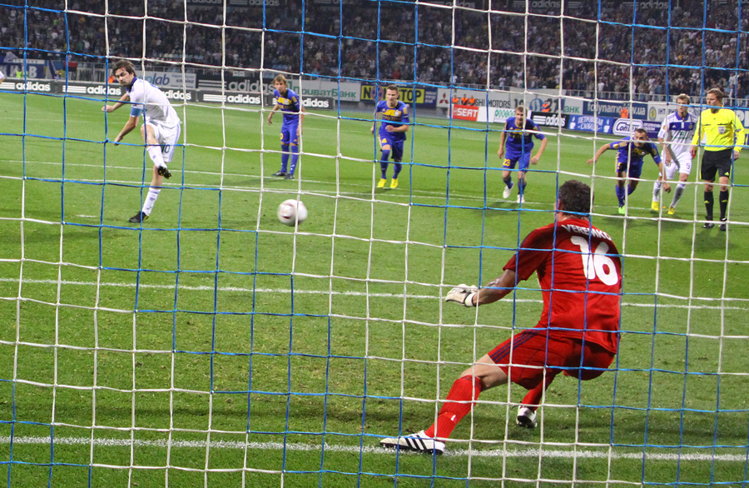
Yet it wasn’t considered to be the perfect punishment initially. For starters, the players didn’t really understand how the new rule worked and to begin with they all stood between the ball and the goal, as they had done or years under the rules of the direct free-kick. The referee was forced to move them all out of the way in order for the kick to be taken and even then that was only after he’ll have paced out the twelve yards for the point at which the kick needed to be taken from, with the new pitch markings not coming into effect until later in the year. It wasn’t until 1902, when the goal and penalty areas took on a look more akin to what we’d expect to see today, that a penalty spot was introduced and players had to take their penalties from there rather than from anywhere that was twelve yards away from goal.
Initially, there was nothing to stop a goalkeeper rushing out from his line as the opposition player ran up to take his penalty. This was a tactic that used often by Willie Foulke, a player known affectionately as ‘Fatty Foulke’ owning to his size – he was six foot three inches tall and weighed about twenty-three stone. As the player prepared to take the penalty against him, Foulke would run out screaming all sorts of abuse at the taker and trying to intimidate them. Presumably goalkeepers tried similar tactics and, as a result, an alteration to the rules around penalty kicks was introduced in 1905. It stated that the goalkeeper must stay on his line until the ball was kicked, with that alteration remaining in place ever since.
As an aside, apparently Foulke is also responsible for one of football’s most famous phrases. When his side Bradford played Accrington Stanley he couldn’t wear his goalkeeper’s top because it clashed with those worn by the Accrington players. His size meant that they couldn’t find a shirt big enough to fit him and so a white bed sheet was obtained from one of the houses close to the football pitch. Foulke played the entire game without getting a mark on it, with Bradford winning the game 1-0. As a result, the phrase ‘to keep a clean sheet’ was born. Whether that’s apocryphal or not, it’s amusing to think of the idea of a phrase used regularly in modern football coming about because a goalkeeper was too fat to wear normal clothes.
The Penalty Shoot-Out

The penalty as we know and love/loathe it today has been pretty much the same since 1905, then. Some slight changes to the things that surround it have occurred over the years, such as the introduction of the ‘D’ shape on the penalty box to keep players at least ten yards away from the kicker, but generally speaking it’s remained the same for more than one-hundred years. Yet when we football supporters talk about ‘penalties’ their mind doesn’t immediately go to one given during the ninety minutes of a match. Instead, most people will think about the disciplines long-form relative, which is known as a penalty shoot-out. Has that always been the way that matches were settled? If not, how did things work before?
The The Football Association Challenge Cup was first played in the 1871-1872 season, making it one of the oldest such competitions anywhere in the world. Knockout football has existed for about as long as the sport itself, therefore, and has naturally been accompanied by the necessity to find a decisive winner of a game in some instances. Given that the penalty as a thing wasn’t introduced until 1891, there were twenty years or so when it couldn’t have even been thought about as a way to settle such a game. As a result, games that ended in a tie but needed a winner would either be replayed or, far more randomly, decided by the toss a coin. If neither of those options were possible then the match would be decided by the drawing of lots.
It was this latter method that was the catalyst behind the invention of the penalty shoot-out by Yosef Dagan, an Israeli who watched his national team lose their quarter-final of the Olympic football tournament in 1968 after Bulgaria beat them in a drawing of lots. The proposal was explained in an edition of FIFA News in 1969 by Michael Almog, a man who would later go on to be the President of Israel’s FA, and was pushed for adoption by the Malaysian FA’s member of the refereeing committee, Koe Ewe Teik. The proposal was discussed by the International Football Association Board on the twentieth of February in 1970 before being officially adopted on the twenty-seventh of June the same year, in spite of the fact that the IFAB were ‘not entirely satisfied’ with the idea.
The new format for deciding a match was first used in England at Boothferry Park 1970. Hull City were hosting Manchester United in the semi-final of the Watney Cup and neither the ninety minutes of the game nor extra-time could separate the two teams. It went to penalties and George Best became the first player to score one in the new way of deciding a game. Denis Law was the first player to miss a penalty in a shoot-out, if you’re interested, with Ian McKechnie saving it. McKechnie was also the first goalkeeper to have to take a penalty, sending Hull City crashing out of the cup when his attempt hit the crossbar. Despite being an early adopter of the now famous method of deciding a game, the English don’t have a great record when it comes to the actual taking of penalties. At the time of writing, the England national team has lost six out of eight penalty shoot-outs that have taken place in major international tournaments since their introduction.
Variations Of The Penalty
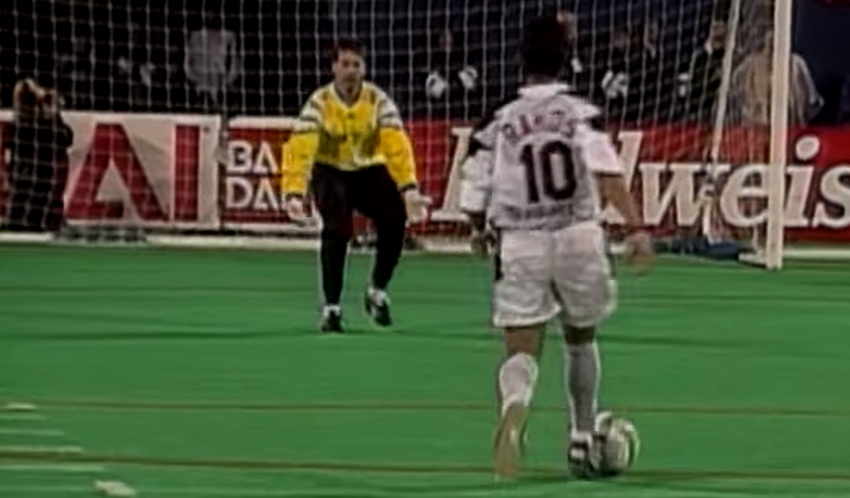
We mentioned in the introduction that there have been numerous attempts to come up with a way to either remove the need for penalties or else make them a little fairer. After all, across football around 70% of penalties result in goals, meaning that the advantage is definitely in the hands of the attacking player. As a result, FIFA came up with the idea of the Golden Goal in 1993, which was designed to stop games from going to penalties. The rule stated that a team scoring a goal at any point during extra-time in a knockout game would immediately win the game. They attempted to alter things further in 2002 when they introduced the Silver Goal, which stated that any team that was leading at half-time of extra-time would be declared the winners of the match. Both methods of winning matches were removed from IFAB’s Rules of the Game after the European Championships in 2004.
Another variation on the penalty was introduced into the North American Soccer League in 1977, when attacking players were given the ball thirty-five yards from goal and had five seconds to score past the goalkeeper. It was similar to the way that penalties were taken in the National Hockey League. The Americans, never keen on the idea of a match being able to end without a winner, introduced this shoot-out method to every single game that ended on level terms after ninety minutes. The NASL stopped playing in 1982, but the odd form of shoot-out returned to North America with the formation of Major League Soccer in 1995. This time it only lasted for four years, being abandoned once and for all in 1999. Still, the desire of some to avoid the more traditional style of penalty shoot-outs was clear.
Controversial Penalty Incidents
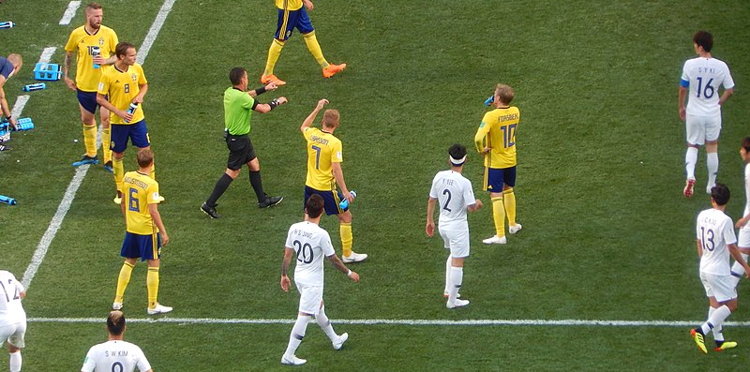
There have been countless controversial penalties given at football matches over the years, so it’s tricky to come up with any sort of definitive list.
Nevertheless, here are just some of the most interesting ones that we found during our research for this article:
- Dundalk v Derry City (1988) – Derry City’s Martin Bayly gave away a penalty against Dundalk’s Larry Wyse in the final of the Football Association of Ireland Cup when they essentially just touched arms. The Dundalk player didn’t even appeal.
- Brisbane Roar v Perth Glory (2012) – If the Dundalk penalty was soft then it’s as nothing compared to the one awarded to Brisbane Roar against Perth Glory in the last minute of the A-League Grand Final. Besart Berish was awarded the penalty for tripping himself up after taking an air-kick at the ball.
- Manchester City v Manchester United (1996) – There’s no better penalty controversy than that that comes in a derby, with Alan Wilkie’s decision to award Manchester United a penalty against Manchester City in the 1996 FA Cup quarter-final taking even the United players by surprise. Put simply, nothing happened but the ref blew up for the pen.
- Nigeria v Argentina (2011) – Sometimes penalty decisions are that bad that they leave you wondering if there might be something more to it. That was the case when Ibrahim Chaibou awarded Argentina a penalty in the 98th minute of a game that only had five minutes of stoppage time added. It was apparently given for a handball, though it was so suspicious that FIFA launched an investigation into suspicious betting patterns.
The Future Of The Penalty

In recent years there has been another attempt to change the way that penalty shoot-outs work, thanks to the introduction of the ABBA format. No, that doesn’t involve big high heels and singing ‘Dancing Queen’. Instead, it requires an alteration to the order that penalties are taken. Previously there would be a coin-toss that would decide which team would take the first penalty, with the two sides then alternating for the duration of the shoot-out. It was felt, however, that that put undue pressure on the team taking the second penalty and that something could be done to make things fairer.
That ‘something’ was the introduction of the ABBA system, which seems team A take one penalty before team B takes two. Team A then takes two successive penalties before Team B takes another two. If you’re unsure of what we’re talking about then have a look at how the tie-break works in tennis and you’ll see what we mean.
That is specifically looking at the penalty shoot-out, of course, but is there likely to be much of a change to the way that penalties are taken during a match? The short answer is ‘no’. Despite the fact that penalties aren’t an ideal way of punishing an infringement of the rules, there isn’t really a better one. There have been changes to the system around penalties, such as the fact that a yellow card can be issued to a player who illegally ‘feints’ once his run up to the ball has been completed. The actual method of the penalty itself is unlikely to go through any major changes any time soon.
To paraphrase Winston Churchill talking about democracy, “the penalty is the worst form of settling a match except for all those other forms that have been tried from time to time”…
